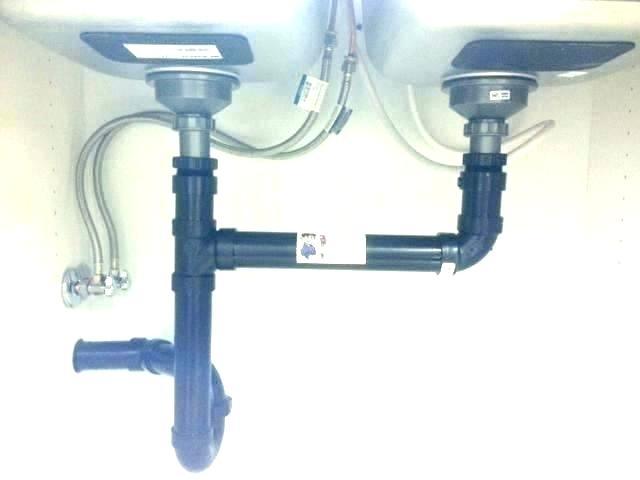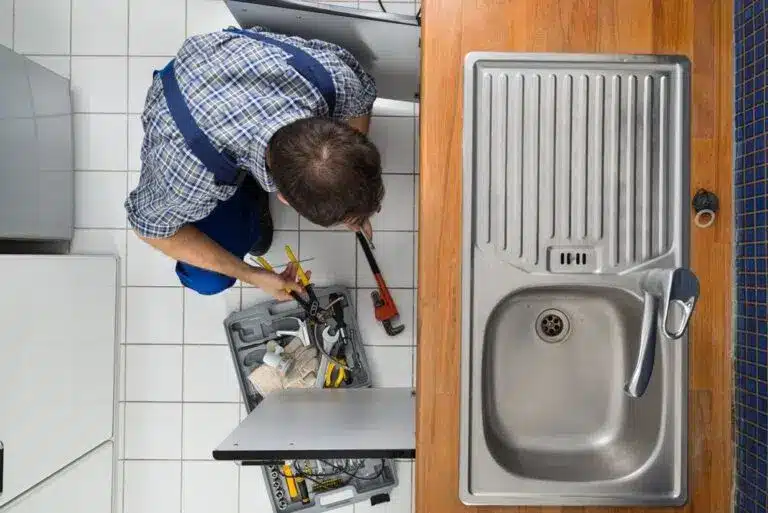Step-by-Step Techniques for Repairing a Leaky Garbage Disposal
Step-by-Step Techniques for Repairing a Leaky Garbage Disposal
Blog Article
Just how do you feel when it comes to Why Is My Garbage Disposal Leaking From the Bottom??

Garbage disposals are necessary cooking area appliances that assist in getting rid of food waste successfully. Nonetheless, a leaking garbage disposal can be an irritating and untidy issue to take care of. The good news is, several leakages can be dealt with quickly with a couple of straightforward steps. In this write-up, we will discuss exactly how to repair a leaking waste disposal unit successfully.
Intro
Waste disposal unit are mounted under cooking area sinks and are developed to shred food waste right into smaller sized pieces, enabling it to travel through the pipes system quickly. While these gadgets are normally reputable, leaks can occur gradually as a result of wear and tear, loose links, or damages to the system.
Common Root Causes Of Leaks in Trash Disposals
Worn Seals and Gaskets
Seals and gaskets play a vital duty in avoiding water from dripping out of the waste disposal unit. In time, these parts can degrade, leading to leakages around the disposal system.
Loose Connections
The connections between the waste disposal unit and the plumbing system can end up being loose in time, triggering water to leak out during procedure.
Splits or Openings in the Disposal Device
Physical damages to the waste disposal unit, such as cracks or holes in the real estate, can additionally cause leaks.
Identifying the Source of the Leak
Before trying to fix a dripping garbage disposal, it is important to identify the resource of the leak. This can generally be done through aesthetic inspection or by performing straightforward tests.
Visual Inspection
Check the garbage disposal device meticulously for any kind of signs of water leak. Pay close attention to areas around seals, gaskets, and connection factors.
Evaluating for Leaks
One means to test for leaks is by running water via the disposal device and checking for any type of visible indicators of leak.
Devices and Materials Needed for Dealing With a Dripping Garbage Disposal
Before beginning the repair work process, gather the essential devices and materials, including a screwdriver, flexible wrench, plumber's putty, substitute seals or gaskets, and epoxy or patching material for fixing fractures or holes.
Step-by-Step Guide to Repairing a Dripping Waste Disposal Unit
Turn Off the Power
Prior to attempting any type of repair work, guarantee that the power to the garbage disposal unit is turned off to avoid the threat of electric shock.
Find the Leakage
Identify the exact location of the leak and figure out the reason.
Tighten up Links
Make use of a wrench to tighten up any kind of loosened connections between the disposal unit and the plumbing system.
Change Seals or Gaskets
If the leakage is because of used seals or gaskets, eliminate the old elements and replace them with brand-new ones.
Patching Fractures or Holes
For splits or holes in the disposal device, usage epoxy or a suitable patching material to secure the broken location.
Evaluating the Waste Disposal Unit After Repair
Once the repair is total, test the waste disposal unit by running water through it to make sure that the leakage has been fixed.
Preventive Maintenance Tips to Prevent Future Leaks
To avoid future leakages, it is important to perform regular upkeep on your waste disposal unit. This includes keeping it tidy, avoiding putting non-food things or hard items down the disposal, and regularly checking for leaks or various other concerns.
Verdict
In conclusion, repairing a dripping waste disposal unit is a reasonably simple process that can be finished with fundamental devices and materials. By following the actions described in this article and exercising precautionary upkeep, you can maintain your garbage disposal in good working condition and stay clear of costly fixings in the future.
What to Do About a Leaking Garbage Disposal
A leaking garbage disposal often goes unnoticed until you confront a sopping cabinet, a foul-smelling puddle, or an audible drip-drip-drip from the unit. The fix can be frustrating, too, because the leak can stem from a number of components in the system. Fortunately, with a little sleuthing, you can zero in on the leak and—depending on the exact location—stop the icky oozing and repair the component that caused it. Worst case scenario, if it turns out that the garbage disposal must be replaced, installing a new one is a reasonable do-it-yourself task for those with basic plumbing skills. Read on to keep the cash you’d otherwise hand over to a pro.
Prepare to find the leak
Prior to testing the garbage disposal for leaks, unplug it at the wall outlet and turn off the power from the breaker box to prevent electrical shock. Then insert a watertight sink stopper into your sink drain and wipe the unit dry with a clean cloth. In any handy container, mix a few drops of food coloring into a few cups of water, and pour the dyed water onto the sink stopper to help you locate the leak.
Investigate the source
the top, where the disposal meets the sink drain the side, where the dishwasher hose or main drain pipe connects to the disposal or the bottom of the unit Inspect each of these locations while gliding a light-colored rag over the unit; the dyed water will readily show on the rag and reveal the location of the leak. If a leak isn’t immediately apparent, remove the sink stopper and pour a few more cups of dyed water down the sink drain, then check for leaks again. Leaks near the top of the unit are more likely to show themselves while the sink is plugged, while side and bottom leaks are more noticeable while the sink is unplugged.
The metal sink flange that sits directly inside the sink drain is typically sealed around the top with plumber’s putty (a clay-like sealant) and then secured from under the sink with bolts. If the plumber’s putty deteriorates, or the bolts loosen, the flange can no longer form a watertight seal between the sink drain and the disposal—which could cause a leak at the top of the unit.
To reseal the leaky flange, you must first detach the garbage disposal. Start by loosening the screws securing the main drain pipe to the disposal, then loosen the screws in the metal clamp securing the dishwasher hose to the disposal and detach the drain pipe and dishwasher hose from the disposal. Loosen the screws in the mounting ring that connects the disposal to the metal mounting assembly beneath the sink, then pull down the disposal and carefully set it on a clean, dry surface. Loosen the bolts in the mounting assembly with a wrench, then pull down the mounting assembly and set it near the disposal.

As a passionate person who reads about Why Is My Garbage Disposal Leaking From the Bottom?, I thought sharing that section was essential. Enjoyed our write-up? Please share it. Help another person find it. Thanks a lot for your time. Visit again soon.
Get An Estimate Report this page